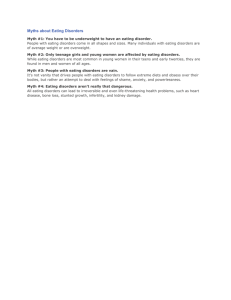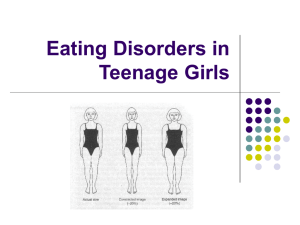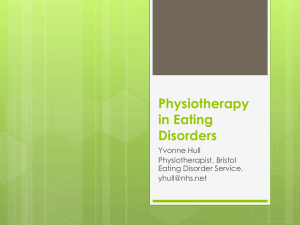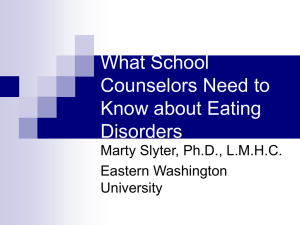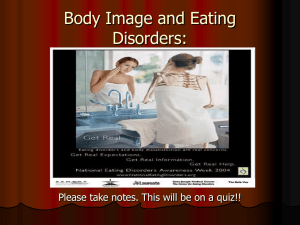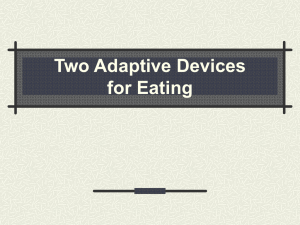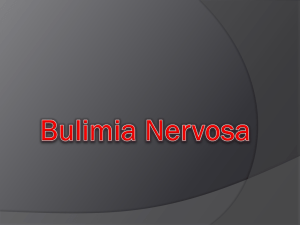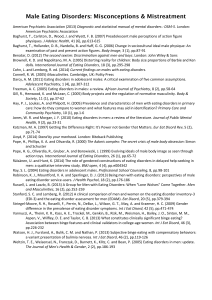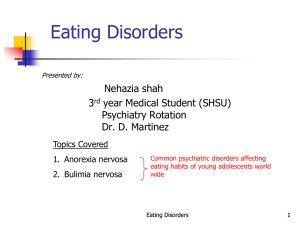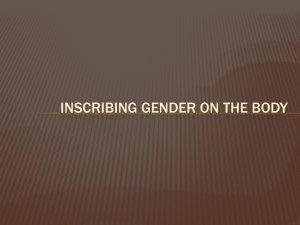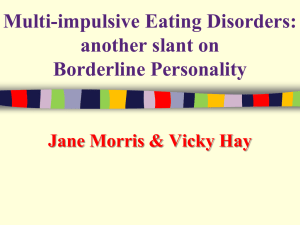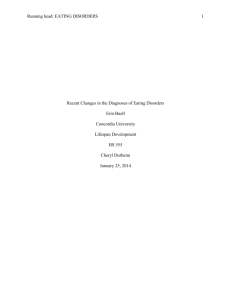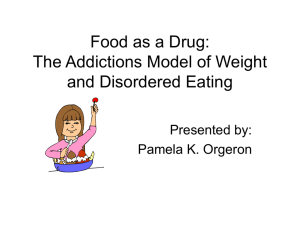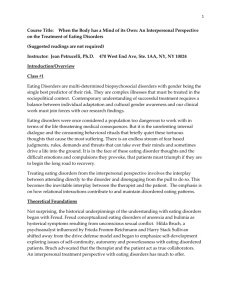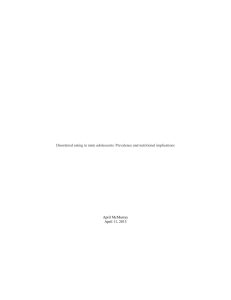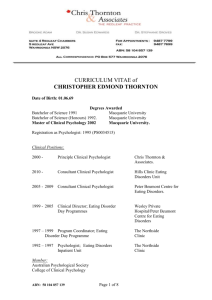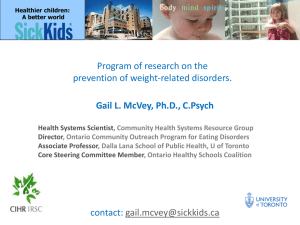Contemporary Nutrition: Issues and Insight 6th ed. Gordon M
advertisement
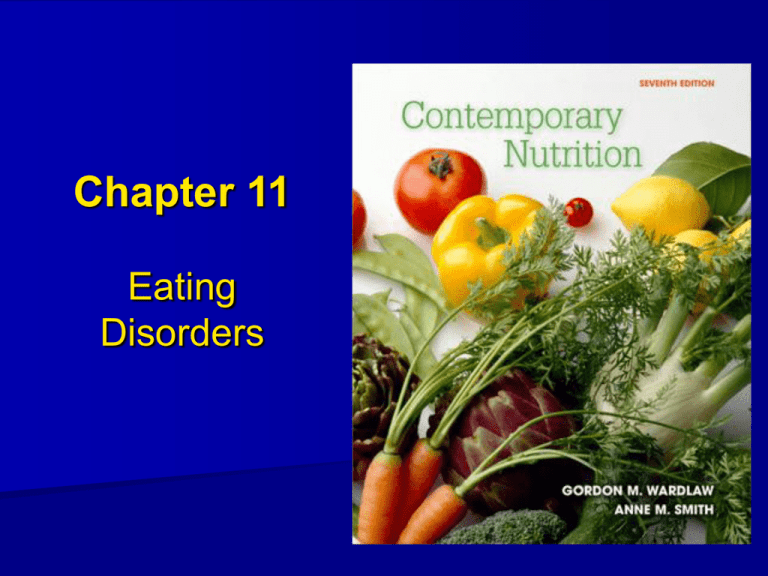
Chapter 11 Eating Disorders Overview of Eating Disorders Affects more than 5 million people 85% of cases develop during adolescence Co-occurs with other psychological disorders Recognition of disorder is critical to treatment END-CHAPTER 11 – Very informative: Personal Reflections: -Thoughts of an Anorexic - Thoughts of a Bulimic Genetic Link? Identical twins are more likely to share eating disorders – Genetically predisposed? Fraternal twins are less likely Characteristics: Anorexia & Bulimia Helpful Resources Course TEXTBOOK – Wardlaw 7th Edition – Contemporary Nutrition Academy of Eating Disorders– www.aedweb.org National Eating Disorders Association – www.nationaleatingdisorders.org National Institute of Mental Health – www.nimh.nih.gov/publicat/eatingdisorders.cfm UCSC – Womens Center – http://www2.ucsc.edu/wmcenter/body.html Warning Signs of Anorexia Abnormal, rigid eating habits Eating very little food (300-600 kcal/day) Hiding and storing food Exercising compulsively Preparing meals for others, but not eating Withdrawing from friends and family Critical of self and others Sleep disturbances and depression Ammenorrhea Anorexia Health Problems “Skin-and-bone” appearance Lowered body temperature Lanugo and loss of hair Lower basal metabolism, decreased heart rate Iron deficiency anemia and other nutrient deficiencies Rough, dry, scaly, cold skin Low white blood cell count, potassium Constipation, ammenorrhea < % body fat, shutdown of reproductive hormones Nutrition Therapy Increase food intake to raise basal metabolism Prevent further weight loss Restore appropriate food habits Restrict excessive activity Ultimately achieve and maintain weight gain to establish setpoint Bulimia Nervosa Bulimia Health Problems Vomiting causes most health problems Demineralization of teeth Drop in blood potassium Swelling of salivary glands Stomach ulcers and bleeding Constipation Ipecac syrup is toxic Treatment of Bulimia Nervosa Decrease episodes of bingeing & purging Psychotherapy to improve self-acceptance Change “all-or-none” attitude about food Correct misconceptions about food Establish good, normal eating habits Group therapy Antidepressants Long-term therapy Binge-Eating Disorder Profile of a Binge-Eater Considers self as hungrier than normal Isolates self to eat large quantities Suffers from stress, depression, anxiety, loneliness, anger, frustration that can trigger binge Uses food to reduce stress, provide feeling of power and well-being Usually binges on “junk” foods Eats without regard to biological need Treatment of Binge-Eating Eat in response to hunger, not emotions Learn to eat in moderation Avoid restrictive diets that can intensify problems Address hidden emotions “Overeaters Anonymous” Antidepressants Profile of Female Athlete Triad Female athletes in appearance-based and endurance sports – 15% swimmers; 62% gymnasts; 32% other 1. Disordered eating 2. Irregular menses or ammenorrhea 3. Osteoporosis and loss of estrogen – Bone density similar to 50-60 year olds – Bone loss is largely irreversible Bone Structure Treatment of Female Athlete Triad Reduce preoccupation with food, weight, and body fat Gradually increase meals and snacks Rebuild body to healthy weight Establish regular menses (find weight?) Decrease training by ~10%-20% – Normal mensus is good!!! Night Eating Syndrome Eating > 1/3 of calories after evening meal Not feeling hungry in the morning Need to eat to help fall asleep Waking at night to eat Depressed Chapter 11- eating disorders Moral: – People who have disorder (psychological) Will continue until organ failure (don’t think it’s a problem) – e.g. Christy Henrich, promising young gymnast Try to get them to seek help (intervention) RESOURCES MY PSA for the day . . .recog. Primarily psychological issue, if feel you are close to family/ friend have problem . . . Seek information and help Helpful Resources Course TEXTBOOK – Wardlaw 7th Edition – Contemporary Nutrition Academy of Eating Disorders– www.aedweb.org National Eating Disorders Association – www.nationaleatingdisorders.org National Institute of Mental Health – www.nimh.nih.gov/publicat/eatingdisorders.cfm UCSC – Womens Center – http://www2.ucsc.edu/wmcenter/body.html


